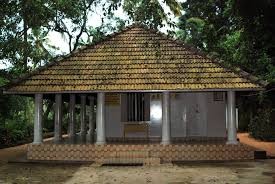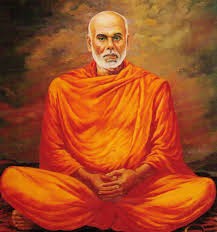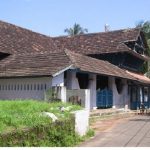Light for Life : Sree Narayana Guru – Relentless Struggle to Eliminate Castes
He was man who pointed out the evils in the society and was bent upon rectifying them through his teachings and preaching as well as actions to involve all communities in temple worship. He was spiritual guru who went on to become a social reformer. He was Sree Narayana Guru, a spiritual guru from Kerala who revolutionized the society with his deeds, that has paved way for a democratic country.
From upliftment of the backward classes to allowing temple entry to all communities to providing education to all. Sree Narayana Guru has been the one of the firsts to proclaim the importance of cleanliness in our country.
Sree Narayana Guru (1855 – 1928) of Kerala, a Jnani who shone simultaneously as a Spiritual Master, a Mystic poet, a social reformer. His teachings have influenced a lot of Indians so much so that Mahatma Gndhi was also inspired by his work and made it a point to visit the Guru on many occasions during his travel across the country.
In fact Mahatma Gandhi had visited Kerala on five occasions. His first visit was on 18th August 1920 when he arrived at Calicut (Kozhikode) to garner support for the Non Co-operation movement. The next one was in 1925 (March 8 – 19) to support the Vaikom Satyagraha. The third visit was in 1927 (October 9 – 15), when he spent sometime in Kerala before proceeding to Ceylon (Sri Lanka). The fourth visit was in 1934 (January 10 – 22), during which he visited the Matrubhumi news press. The fifth and final visit was in 1937 (January 12 -21), the chief purpose of which was the celebration of the Temple Entry Proclamation announced by the King of Travancore on 12th November 1936.

Birth & Early Life
Sree Narayana Guru was born under the star ‘Chathayam’ in the month of ‘Chingam’ in 1856AD (1032 of the Malayalam calendar) in the village of Chempazhanthi in Trivandrum, the capital of Kerala as the son of Madan Asan, a farmer, and Kutti Amma. Yet Gurudev reportedly told some of his followers that he was actually born in 1030.
Stress on Overall Development
At the beginning of 1928 while the Sree Narayana Guru was camping at Nagampadam temple at Kottayam, a couple of his ardent disciples – Vallabhasseri Govindan Vaidyan and Kittan writer – hesitantly mooted the idea of “ Pligrimage to Sivagiri”. Swamiji enquired them about the object of the pilgrimage but they couldn’t reply. Hence the Guru himself explained that the aim of Theerthadana (pilgrimage) must be for the creation of a comprehensive knowledge among the people for their overall development and prosperity and suggested certain norms to be observed.

The pilgrims should reach Sivagiri in yellow garb as the symbol of devotees, after following a brief ten day austerity based on Sree Budha’s five purities of Body, Word, Mind, Food and Deed. Guru underlined the need for education, cultural and moral purity for the yearly meet. January 1, the new year day was suggested for the Pilgrimage and it should be so planned to focus attention on eight subjects – Education, Cleanliness, Piety, Organised Endeavour, Agriculture, Trade , Handicrafts and Technical Training. The Guru concluded that this should be the main goal of the pilgrimage to Sivagiri.
Teachings and Messages
Though the Guru had permitted the idea of starting the pilgrimage and prescribed the modalities to be observed early in 1928, it could not be fulfilled till 1933 on account of Swamiji’s Maha Samadhi on September 20, 1928, and also due to unfortunate rift between the two organisations – S.N.D.P Yogam and the Dharma Sanghom, both founded by the Gurudev.
The S.N.D.P Yogam was registered as a joint Stock Company in 1903 with Sree Narayana Guru as life time President, Dr. Palpu as Vice President and Kumaran Asan as General Secretary for the implementation of Sree Narayana Dharmam and the Sree Narayana Dharma Sanghom, a spiritual order of Sanyasins founded on January 11, 1928 for propagation and dissemination of the teachings and messages of the Guru.
We are living in the 21st century. The Gurudev was in the 18th and 19th centuries from 1855 to 1928. The present generation is not fully aware of the social systems, especially of the backward class communities, prevailed during those days. In order to get an idea about the pathetic and precarious conditions of the downtrodden sectors and the endeavour of the Guru for eradication of the caste system and upliftment of those oppressed class we must look into the past.
Role in Elimination of Caste system
The society was divided into castes and subcastes with social ranking and also classified as Savarnas – the privileged upper class and Avarnas as untouchables. The Avarnas or untouchables and unapproachables, were tortured and harassed both physically and mentally. They were treated as slaves of the Savarnas and had no access to public roads, public offices like post office, court, schools even hospitals. In temples, the offering of Avarnas in the form of cash was acceptable but they were prohibited to enter in it. For easy identification, separate dress code and hair style was imposed. An Avarna man was not allowed to grow a mustache and a woman could not cover her bossom and she was the object of pleasure for any upper caste man. In addition to such humiliations, atrocious taxes were levied on them which were extracted under the threat of severe punishments. The Avarnas of Kerala were the most subjugated and exploited set of people in India. This pathetic situation extracted the comment from Swami Vivekananda that Kerala is a lunatic asylum and Keralities are insane.
After withdrawal of meditation at Maruthvamala Guru saw around him the humanity struggling in ignorance with no one to guide. The Guru approached them with his advaitha Philosophy, One caste, One religion and One God for man. As the same universal spirit glows in all human beings, there is no difference between them and the caste system which divides humanity and its direct off -shoot untouchability are absolutely baseless. It is against the spirit of Advaitha.

Caste & His Scientific Explanation
The Guru offers scientific explanations through two poems Jathinirnayam (Determination of Caste) and Jathilakshanam (Characteristics of Caste). These two poems explain how the Guru denies the validity of caste as a social institution. He equates the meaning of the word caste with the biological term species. Each species (Jathi) has its distinctive characterstics.
All human beings are born from a mother and all have the same figure. Brahmin and Paraya both are born in the same way. There are no characteristics distinguishing between the two. Hence they belong to the same jathi, ‘narajathi’.
Some people feel shy to tell their caste. The hierarchical superiority and inferiority in the name of caste is ingrained in the minds of people since ages. Therefore when questioned about what his caste is, a lower caste man may tell a lie to hide his caste. To save him from such a situation, the Guru declared – “Ask not, Say not, Think not Caste”. His idea was not to establish equal status for castes but to eradicate the very idea of caste from the minds of his followers.
Mahasamadi
When his 60th birth anniversary was being celebrated 1916 he laughingly said “my 60th birthday (sashtabhdhapoorty) was quite a while ago. His parents, ‘Madan Asan’ and ‘Kutty Amma’ endearingly called him ‘Nanu’. At the age of five, he began his education in the neighboring school in the old “Gurukula” model.’ Madan Asan’ was also a teacher (“Asan”) who was learned in Sanskrit and proficient in Astrology and Ayurveda.
With 200 acres of sanctified land, this is the final resting place of the most eminent leader, saint and social reformer of Kerala, Sree Narayana Guru. SNDP (Sree Narayana Dharma Paripalana Yogam), the organization he founded for the upliftment of backward classes, is headquartered here. The Mahasamadhi of the revered guru is located on top of a hillock.
Must Read : Light for Life : Tridandi Sri Chinna Jeeyar Swami – Leading by Example
Must Read : Blind Walk : From Darkness to Light : Initiative by Dialogue Highway and The Project Vision









